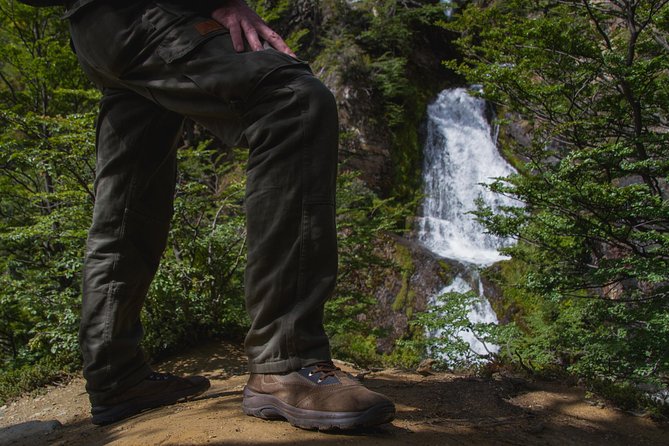Comuna 2 Trip Overview
Learn about the Belle Époque in Buenos Aires with this 2-hour private walking tour in Recoleta neighbourhood.
With over 6,400 statues, sarcophagi, coffins and crypts commemorating some of Argentina’s most celebrated sons and daughters, Recoleta Cemetery (also known as “The City of Angels”) is a must-see in Buenos Aires.
This is where you will get the chance to visit Evita Perón´s mausoleum and understand why she was so loved and hated at the same time.
Then we will continue the walking tour visiting the highlights of Recoleta: the famous gum tree, Basilica Nuestra Señora del Pilar, the Law School and the Floralis Genérica.
You will be escorted by a local, knowledgeable guide that will make sure that you make the most of your tour.
Additional Info
Duration: 2 hours
Starts: Comuna 2, Argentina
Trip Category: Cultural & Theme Tours >> Historical & Heritage Tours
Explore Comuna 2 Promoted Experiences
What to Expect When Visiting Comuna 2, Buenos Aires, Argentina
Learn about the Belle Époque in Buenos Aires with this 2-hour private walking tour in Recoleta neighbourhood.
With over 6,400 statues, sarcophagi, coffins and crypts commemorating some of Argentina’s most celebrated sons and daughters, Recoleta Cemetery (also known as “The City of Angels”) is a must-see in Buenos Aires.
This is where you will get the chance to visit Evita Perón´s mausoleum and understand why she was so loved and hated at the same time.
Then we will continue the walking tour visiting the highlights of Recoleta: the famous gum tree, Basilica Nuestra Señora del Pilar, the Law School and the Floralis Genérica.
You will be escorted by a local, knowledgeable guide that will make sure that you make the most of your tour.
Itinerary
This is a typical itinerary for this product
Stop At: Cemiterio de Recoleta, Junin 1760, Buenos Aires C1113 Argentina
Considered one of the most unusual cemeteries in the world, the site was declared the city’s first official public burial place in 1822. Aside from being the resting place of the deceased, it is completely unlike a normal cemetery. It’s more magical than macabre. The burial site of Argentina’s most famous figures, including Evita herself, the cemetery is a must-do while in Buenos Aires.
Duration: 1 hour
Stop At: Gomero de la Recoleta, Barrio de Recoleta, Buenos Aires 1126 Argentina
Known as the Gran Gomero, it was planted in 1791 and it is 50 meters wide.
Duration: 5 minutes
Stop At: Basilica de Nuestra Senora Del Pilar, Junin 1998, Buenos Aires Argentina
It was opened in 1732, based on a design by the jesuit architects Bianchi and Prímoli.
Externally, the basilica has a simple, whitewashed colonial style and inside it conserves magnificent original altarpieces and ornaments.
The basilica belonged to the Recollects order of friars, after which the Recoleta neighbourhood is named. At the time of construction, the location was on the outskirts of the city, taking into account the order’s rules of withdrawal and seclusion. The money for the construction came from a neighbour who was originally from Zaragoza in Spain, and he made the donation on the condition that the church was dedicated to the Virgin of the Pillar, an aparition of the Viring Mary associated with Zaragoza.
The church has a single nave with a developed transept, covered by sail vault, and shallow side chapels. Highlights include the baroque main altarpiece, a singular piece with Inca ornamentation and silverwork from Peru.
Duration: 10 minutes
Stop At: Facultad de Derecho – Universidad de Buenos Aires, Avenida Pte Figueroa Alcorta 2263, Buenos Aires C1425CKB Argentina
This imposing 1949 neoclassical building is the home of the University of Buenos Aires faculty of law.
Duration: 5 minutes
Stop At: Floralis Generica, Av Pres Figueroa Alcorta, Buenos Aires 2301 Argentina
Named “Floralis Genérica” in homage to all flowers, this 20m-high, 18-tonne aluminium and stainless steel sculpture dominates the Plaza de las Naciones Unidas.
Unveiled in the year 2002, it was probably the world’s first mobile public sculpture to be controlled by hydraulics and photoelectric sensors. It was donated to the city of Buenos Aires by its creator, the Argentine architect Eduardo Catalano, who in this piece realised his dream of creating a sculpture that would reflect the dynamism of time. Catalano once said the sculpture was “a synthesis of all the flowers and a hope that is reborn every day.”
Duration: 10 minutes






